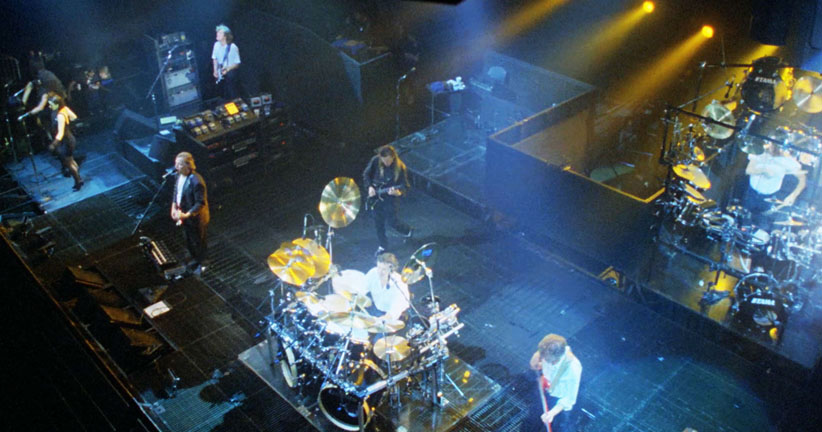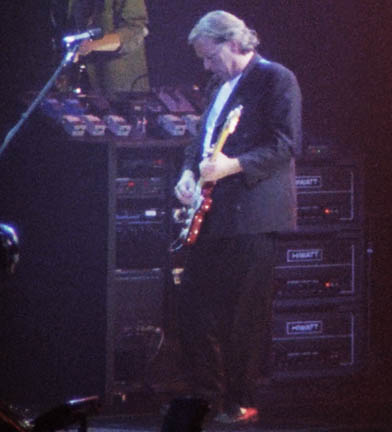NOTE: This website is frequently updated. Last update October 2023
For song-by-song signal chains CLICK HERE
For my setups and sound clips CLICK HERE
A MOMENTARY LAPSE OF REASON TOUR LEAD TONES - I actually prefer all these live 1987-1988 lead tones much more than the tones from the original Momentary Lapse of Reason studio recordings. The Gilmour lead solo tones I love the most were the tones heard on 1988 leg of the tour. The tour was documented in an unreleased concert film recorded on November 3rd-5th, 1987 at the Omni in Atlanta (available in bootleg form as Would You Buy a Ticket to This Show?). Except for a few songs released as music videos to MTV, the 1987 concert film was never officially released. Supposedly the band felt the production and filming was not up to their standard, but they would try again and succeed the following year.
The Delicate Sound of Thunder original live album cover art from 1989, the Pink Floyd The Later Years box cover,
the cover to the 2019 Delicate Blu Ray included in The Later Years, and the stand alone 2020 Blu ray/DVD box
The Delicate Sound of Thunder live album and concert film, recorded in August 1988 at the Nassau Coliseum in New York, was release in November 1988 (album) and June 1989 (film). The album could win the award for worst Pink Floyd cover ever, but it sounded fantastic. The sound of some of the older Floyd songs and the overall band sound is very dated to the era now, but Gilmour's lead tones were heavenly. In 2019 an expanded and remixed version of the Delicate film and live album was released in Pink Floyd's The Later Years boxed set. It included a few tracks that were not in the original release, like Welcome to the Machine. A few of David's guitar solos were also extended to include material cut from the original release, and strangely, some music in the original release was cut out of this version. The concert film, which was originally released in 1989 on VHS and Laser Disk formats, was re-scanned in high definition from the original 35mm film negatives and entirely re-edited and expanded for a Blu Ray included in The Later Years. A stand alone Blu Ray/DVD version of the re-edited film and stand alone remixed live album was released in 2020. It is a beautiful film and an enduring document of this period in Pink Floyd's history.
Below is a 22 minute selection of solos from DSOT and other concerts from the 1987-88 tour.
snapshots of the tour stage from the Learning to Fly video
Snapshots from an unreleased Pink Floyd concert movie, filmed on November 3rd-5th 1987 at the Omni in Atlanta Georgia
1987 - THE MLOR TOUR RIG - For the live sound of the first leg of the tour (September-December 1987), David basically used much of the same gear as on his About Face tour in 1984, with the addition of a TC Electronic BLD (Booster + Line driver & Distortion), and several new rack effects. He mostly used his Candy Apple Red '57V Stratocaster reissue and cream colored '57V reissue Strat, purchased in early 1984. Both were loaded with active EMG-SA noiseless pickups with the SPC/EXG controls, and shortened tremolo arms.
For effect pedals David used a Boss CS-2 compressor, Boss HM-2 Heavy Metal, TC Electronic BLD (Booster + Line driver & Distortion), Electro-Harmonix "Ram's Head" Big Muff, and four Boss GE-7 equalizers (one for each effect). I believe that Ram's Head is David 1974 DG original. It has the same knobs, same rivet on top, and same after-market black foot switch as it did later in 2006 when the DG ORIGINAL label was added to the top.
For rack effects David used a Yamaha SPX 90 II, Roland DEP-5 Digital Delay, TC Electronic 2290 Digital Delay, Korg DRV 3000 Digital Delay, and a Lexicon PCM-70 Effects Processor. Bob Bradshaw of Custom Audio Electronics assembled a new MIDI switching sytem for the tour. His 1987 and '88 signal chain drawings for the MLOR tour rig indicate a Mesa/Boogie amp head was inserted into David's effect signal chain. A Mesa/Boogie Mark I was used as a fuzz box in David's 1984-85 rig, but for this tour it was replaced with 1985 or 1986 rack head version of the Boogie Mark III Simul Class amp which included a built in five band equalizer. It was placed after the HM-2 and Big Muff, and before the modulations and delays, exactly as in the 1984-85 rig. A Bob Bradshaw interview about this rig and his original signal chain drawings can be found on the excellent The Tone from Heaven website.
As with David's previous rig, the power amplifiers were two Twin Reverb II heads, with a third as a spare. These had more mid range than standard Twin Reverbs, as well as a Mesa/Boogie-like overdrive sound. Based on the settings used, David ran these amps clean. For speaker cabinets, rehearsal photos (from 1987) in the May 1988 issue of Guitar World show two Mesa Boogie speaker cabinets. It was stated that those were replaced by two WEM 4x12 cabinets for the tour. Back stage video from 1987 shows David's 4x12 cabinets were a pair of Marshall cabs, and what appear to be a pair WEM cabs, but the WEM badges are not visible. The back of one of David's 4x12 cabs appears to be a WEM Super Starfinder 4x12, seen in back stage video from April 1988. There are also two additional Marshall 4x12 cabs which were used by backup guitarist Tim Renwick.
However, David stated in a Guitar magazine interview from early 1988 that he was using two Marshall 4x12" cabinets and two Hiwatt 4x12" cabinets. I think the WEM cabs were switched for Hiwatt cabs some time after April, probably when David changed from Twin Reverb amps to Hiwatt amps.
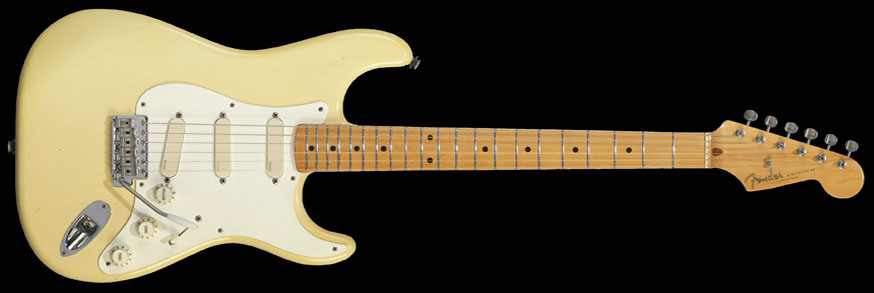
1987 GUITARS - David used a cream colored '57V reissue Strat and his candy-apple-red '57V reissue Strat. Both were purchased in early1984 and in 1985 fitted with EMG-SA noiseless pickups, SPC and EXG controls replaced the tone controls, and the tremolo arms were shortened to fit into David's palm when he played. He also used a butterscotch blonde colored Fender 1952 American Vintage Reissue Telecaster tuned to dropped D for Run Like Hell. David also used his Charvel San Dimas guitar for Pink Floyd's Madison Square Garden concert in 1987.
For slide guitars David used a red Jedson lap steel tuned to Open Em (EBEGBE) and a blonde Fender Deluxe lap steel tuned to Open G (DGDGBE). For acoustic guitars, David used a Takamine Nakatsugawa EN-28 6-string guitar for Wish You Were Here and a Takamine Nakatsugawa EF-400S 12-string guitar for Welcome to the Machine.
(above) The first version of David's new rig from early 1987, assembled by Bob Bradshaw of Custom Audio Electronics.
Effect Pedals (top row) - Boss CS-2, Boss HM-2, TC Electronic BLD (Booster + Line driver & Distortion),and DG Original EHX Ram's Head Big Muff
Effect Pedals (bottom row) - Two TC Electronic Sustain+Parametric Equalizers (with built in noise suppressor), and TC Electronic Dual Parametric Equalizer
The TC Equalizers on the bottom row of the pedalboard were not used for the tour
(above) David's rig from the tour rehearsals in Toronto, August 1987. David used some of the same pedals, rack effects, and the same Fender Twin Reverb II
amps from his previous rig. The Mesa Boogie was a Mark III rack version with 5 band EQ. Two of the TC Electronics equalizers were replaced with Boss GE-7s
(above) David's 1974 Big Muff, the DG original, as it appeared in 2015 (left), and from late 1987 (middle). The Muff was paired with a Boss GE-7 equalizer using the settings shown above. Note the white tic marks indicating David's Big Muff settings. The original Big Muff pots (potentiometers) were aligned differently from each other, and the tone pot was wired in reverse of modern Big Muffs. Pete Cornish replaced all of the pots and aligned them all in the same orientation.
(above) David's Pete Cornish-modified Big Muff from late 1987, the DG Original. The white tic marks indicating David's Big Muff settings. The equivalent settings sare shown above (right) on a modern EHX Ram's Head Big Muff reissue. The sustain setting is very low, but the Big Muff was used in conjunction with overdrive from the Mesa/Boogie in this signal chain.
(above) David Gilmour's final tour pedal board from late 1987. All the TC equalizers from earlier 1987 were swapped for Boss GE-7 equalizers.
Pedalboard Effects:
Top Row - Boss CS-2 compressor > Boss HM-2 Heavy Metal > TC Electronic BLD (Booster + Line driver & Distortion)> Electro-Harmonix Big Muff
Bottom Row - four Boss GE-7 equalizers (one in a loop with each effect - each follows the effect being EQ'd)Rack Effect from top to bottom - left side rack:
• Furman PR8 Power Conditioner
• Yamaha SPX 90 II chorus
• Roland DEP-5 Digital Delay
• Rane SM-26 Mixer
• TC Electronic 2290 Digital Delay
• Korg DRV 3000 Digital Delay
• Lexicon PCM-70 Effects Processor
• Rane SM26 mixers
• Pete Cornish VCA voltage controller
• Rocktron Hush II Noise Reduction SystemRack Effect from top to bottom - right side rack:
• Furman PR8 Power Conditioner
• MXR Digital Delay System II
• Mesa/Boogie Mark III Simul Class rack amp head - used as an overdrive, placed in the pedal chain after HM-2Amplifiers - in rack on far right - each amp head powered a WEM Super Starfinder 4x12 speaker cabinet
• Fender Twin Reverb II - left channel
• • Fender Twin Reverb II - right channel
• Fender Twin Reverb II - spare
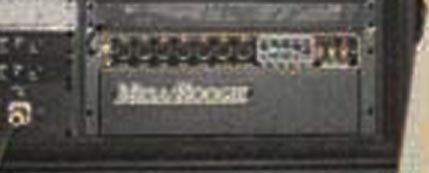
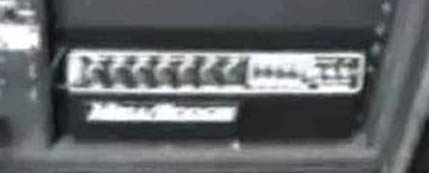
(above) David Gilmour's Mesa/Boogie Mark III Simul Class rack amp head with five band EQ. This was a 1985 or '86 model built by Mesa in a rack enclosure,
rather than a wood cabinet. The Boss HM-2 and Big Muff were blended with a light overdrive from the Boogie for David's lead sounds.
Photos of David's Boogie settings from 1988 and 1990 show it was set for a slightly dirty Fender-ish clean sound with a bright mid range.
Note that this amp head did not power a speaker cabinet. It was used as rack effect in the pedalboard signal chain.
(above) David Gilmour's 4x12 speaker cabinets, possibly WEM Starfinders, stacked on top of Marshall 4x12 cabinets, seen in the background of
these photos from late 1987. Two more Marshall 4x12 cabinets cabs be seen to the left of David's cabs. Those were for backup guitarist Tim Renwick.
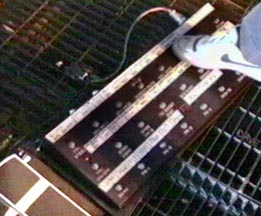
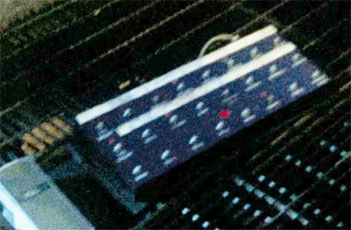
(above) David Gilmour's Custom Audio Electronics MIDI Foot Controller built by Bob Bradshaw. David could switch on/off 19 different effects and control functions manually. There were also 4 preset switches to store the combinations of different effects for different songs, and a bank up switch to access the 10 banks for each of the four switches.
Gilmour's wireless guitar system, the Schaffer Vega Diversity System (SVDS)
Another element of this rig that some people think contibuted to the tone shaping, although in a very minimal way, was the Ken Schaffer designed Schaffer Vega Diversity System (SVDS), made from 1975-1981. It was one of the first reliable wireless stage systems used by many of the top touring musicians at the time, as well being a part of some recording studio rigs. Why use wireless system in a recording studio? Not for the wireless aspect of the SVDS, but for the slight, and unintentional, tone coloring created by the circuit when the signal was compressed in the transmitter then expanded at the reciever. This 'companding' circuit altered the harmonic content of the guitar signal in a way that some guitarists liked, as well as adding a clean boost. To my knowlwdge, David never used one in the studio like this, but he did use them in his live rigs from 1980-1990.
Only around 1000 SVDS were made and Pink Floyd owned about 20 of them. David used them in his live rig for The Wall concerts, his 1984 tour, and for the entire MLOR tour. He continued to use the SVDS system in his live rigs long after better wireless systems were available that were less tone altering. Finding a functioning SVDS these days is extremely rare and expensive, but a company called SoloDallas made a replica of the SVDS (minus the wireless part of the circuit) in both tower and foot pedal forms. I don't know how accurate their replicas were to the original circuit, but I tried one of each around 2016. It was basically a clean boost that allowed a bit of drive to be dialed in. Both units were very noisy, so I could not really determine if there was any unique change to the tone when passing my signal through them.
THE 1987 SOUND - Fortunately there are several very good bootleg recordings from the MLOR tour, including three recordings taken straight from the soundboard which give us the sound of David's rig straight from his speaker cabinets. Below is a selection of solos from Pink Floyd's October 11th 1987 soundboard recording from the Meadowlands Arena, New Jersey. The guitar tones were still being refined.
Gilmour Solos Part 1 - from the October 11th, 1987 Pink floyd concert
Gilmour Solos Part 2 - from the October 11th, 1987 Pink floyd concert
Below is a selection of solos from the November 1st 1987 concert in Miami, Florida, where you can hear the high gain lead tone is essentailly the same setup for most of the songs.
Below is a selection of solos from the February 19th 1988 soundboard recording in Melboune, Australia.
Gilmour Solos Part 1 - from the February 19th, 1988 Pink floyd concert
Gilmour Solos Part 2 - from the February 19th, 1988 Pink floyd concert
These are the signal chains I believe were used for the high gain leads. The chorus is an essential color to these tones.
• TC BLD+GE7 > Big Muff +GE7 > Mesa/Boogie rhythm channel set for light overdrive with EQ engaged > Delay > Chorus > Fender Twin Reverb II
• Boss HM-2+GE7 > Mesa/Boogie rhythm channel set for light overdrive with EQ engaged > Delay > Chorus > Fender Twin Reverb II
Below are David's actual pedal and EQ settings based on the August 1987 pedal board snapshots shown above and close ups seen in the First in Space back stage crew film from 1987. How you set the GE-7 equalizers depends entirely on the amp and speakerrs used, so David's exact settings may not work on your setup. I prefer a Boss CE-2 for the lush chorus effect, rather than the SPX-90 II that David used. David switched to the CE-2 later in the tour.
1988 - THE MLOR TOUR AND DELICATE SOUND OF THUNDER RIG - The second leg of Pink Floyd's MLOR tour lasted from January-August of 1988, and that's where the guitar tones got magical. From January to April David was still using the same rig from 1987 with Twin Reverb II power amps. He described this rig to to Guitar Magazine in early 1988:
"Most of my signal goes right through the chain in mono and at the end splits up and one goes through a chorus unit for a very mild chorus, so one stack is straight and one is slightly chorused. I have always used different choruses, but this time I'm using a T.C. (TC 1210 Chorus). I have tons of stuff. I'm using a T.C. digital delay these days because it is MIDI...Basically I use old fashioned little Boss pedals for nearly everything. I also go through a Boogie amp with a dummy speaker load on it, which I basically use like a fuzz box. I can just press a button and go through it and to the power amps after that. That's one fuzz. I have Boss graphics and compressors...I will go for any amount of gizmos and effects, but I like the basic line to go direct and then you duck out of it and throw something back into it. Then I can always know that my level structures are working. I put it all before the amp."
Some time after April he chaged back to his old standard power amps, a pair of Hiwatt 100w heads. David had been using WEM 4x12 and Marshall 4x12 cabs in 1987 through early 1988, but stated in early 1988 that he was using two Marshall 4x12 cabs and two Hiwatt 4x12 cabs. The the WEM to Hiwatt cab change was probably made when he changed amps. The Hiwatt cabs were likely the SE4122 model with 50w Fane speakers. The Marshalls were likely the same 1980s era JCM 800 Lead-1960 straight 4x12 cabs that David was using in the mid 1980s, loaded with Celestion speakers.
There were also several other rig and gear changes. By the time of the August shows when the Delicate Sound of Thunder concert film and live album was recorded at the Nassau Coliseum in New York, David's guitar tones had become much more refined. While I was not a fan of the drum sound and some of the other band instrument sounds on this tour, this is my absolute favorite era for Gilmour's live guitar tones.
The sound was slightly different than the 1987 leg of the tour and the later 1989 tour. Many of the high gain lead tones seem to be the exact same setup on most of the songs. The sound of the solos heard on songs like Sorrow, On the Turning Away, Time, and Comfortably Numb from DSOT were simply incredible, unlike any other guitarist out there at the time, and very difficult to replicate. It took me many years to acquire most the same gear and experiment to find out the exact effect combinations used to achieve these guitar tones. Of course, in David's hands he could make practically anything sound good simply because of his fantastic playing style and unique phrasing. However, from a pure tone stand point, having the correct rig is a big help. Figuring out classic guitar tones is a hobby of mine so I took this one on as a long term challenge.
(above) David's rig from February 1988, before the switch from Twin Reverb IIs to Hiwatts.
The rack effects and pedals are identical to the 1987 tour rig (thanks to Greg Fryer for the pix).
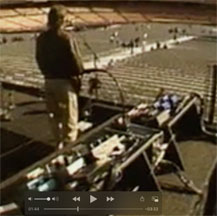
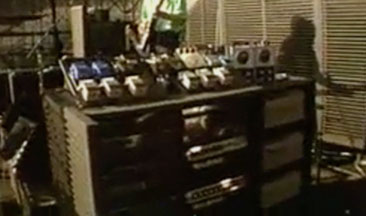
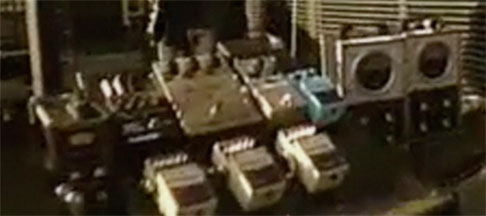
(above) David's rig from April 23rd, 1988, before the switch from Twin Reverb IIs to Hiwatt amplifiers.
More pedals have been added to the pedal board and a second Mesa Boogie (Mark I) head was added to the rack.
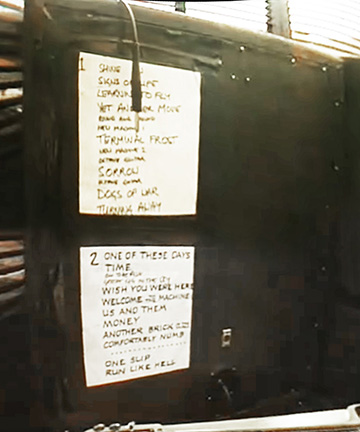
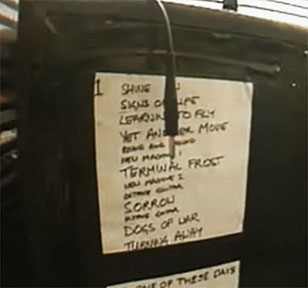
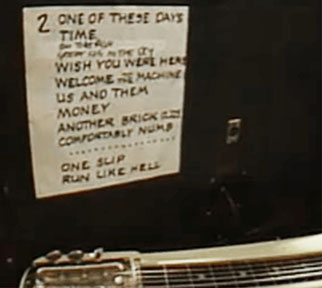
(above) The set list taped to the back of one of David's 4x12 speaker cabinets from April 23rd, 1988. This cabinet
appears to be a WEM Super Starfinder with the round jack plate at the bottom. It is stacked on top of a Marshall 4x12.
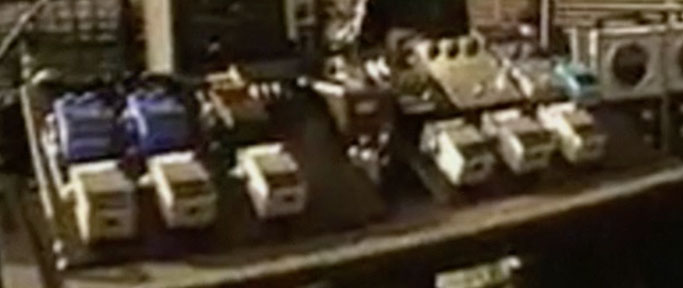
April Pedalboard Effects:
Top Row (left to right) - Boss CS-2 compressor 1 > CS-2 compressor 2 > Boss HM-2 Heavy Metal >
TC Electronic BLD (Booster + Line Driver & Distortion) > Electro-Harmonix "Ram's Head" Big Muff > Cornish P-2 > Boss CE-2 chorus
Bottom Row - six Boss GE-7 equalizers (one in a loop with each effect above it - each GE-7 follows the effect it is paired with in signal chain order)
1988 GUITARS - David stopped using the cream colored '57V reissue Strat and the candy-apple-red '57V reissue Strat became his primary guitar for the tour. It was purchased in early 1984 and in 1985 it was fitted with EMG-SA noiseless pickups, SPC and EXG controls replaced the tone controls, and the tremolo arm was shortened to fit into David's palm when he played. During the January/February leg of the tour in Australia he had it modified by Greg Fryer of Fryer Guitars, detailed here. This involved routing the EMG-SA pickup cavities deeper to allow the pickup height to be reduced. The purpose was to get it as close to sounding like his regular passive single coil Strats as possible, and the having the pickups farther away from the strings accomplished this.
I have found that in most setups the EMG pickups with the SPC control cranked sound very similar to a Strat with a hot bridge pickup, like the SSL-5 in David's Black Strats. For this setup however, there is a difference between the sound of regular passive single coils and active single coils in the EMGs. A hot single coil pickup works just fine, but I do feel EMGs with the SPC control will give a more accurate DSOT tone.
David also used a butterscotch blonde colored Fender 1952 American Vintage Reissue Telecaster with a slim C-shaped maple neck and ash body. It was tuned to dropped D and used for Run Like Hell. It appears this was a stock Telecaster with stock Fender pickups. David also had a second 52 AVRI Telecaster that was made in 1987 for use as a spare. Both guitars were later used for Pink Floyd's 1994 Division Bell tour.
For slide guitars David used a red Jedson lap steel tuned to Open Em (EBEGBE) and a blonde Fender Deluxe lap steel tuned to Open G (DGDGBE). The Jedson, a clone of the Fender lap steel, was purchased in the 1970s and used on Pink Floyd tours. It was modified with an EMG-H pickup (confirmed in the Their Mortal Remains book), an SPC control (presumed), and two switches. The EMG-H was a single coil pickup in humbucker sized housing, similar to the EMG-SA, but with a ceramic magnet instead of alnico. The difference is slightly less midrange than the SA model. I am not sure what the two switches control, but the one labeled MID possibly switches the SPC control in and out of the circuit and the other possibly switches the battery out of the circuit to prevent it from being drained when not in use. The Jedson had also been modified to add a Roland Hex synthesizer pickup, installed behind the EMG pickup. A large cavity was routed out to the right if the output jack to house the electronics for the Hex pickup, so the two switches may have originated as controls for it and are now inactive. The Hex was removed prior to the 1987 tour, leaving an empty cavity.
For acoustic guitars, David used a Takamine Nakatsugawa EN-28 6-string guitar for Wish You Were Here and a Takamine Nakatsugawa EF-400S 12-string guitar for Welcome to the Machine. Both guitars were purchased in 1986 and used on several David gilmour tours. Guitarist Tim Renwick would use the 12-string Takamine for Wish You Were Here to back David playing the 6-string.
David's '57V reissue Stratocaster, fitted with EMG-SA pickups and EXG/SPC controls (replacing the tone controls).
The tremolo arm was shortened to rest in David's palm when he played and the pickup cavities
were routed deeper so the pickups sit lower than what was possible in the 1982-1984 reissue bodies.
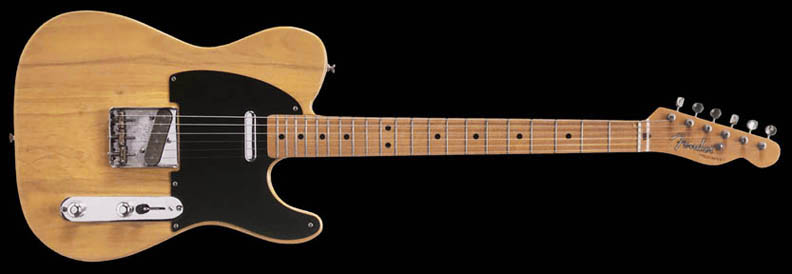
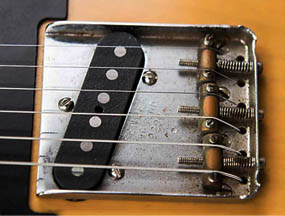
David's Fender 52V 1952 reissue Telecaster with a maple neck and ash body. It was tuned to dropped D for Run Like Hell
Gilmour's red Jedson lap steel with EMG-H (EMG single coil with a ceramic magnet in a humbucker sized housing) pickup and SPC control installed
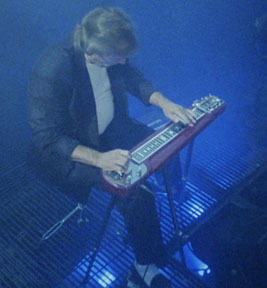
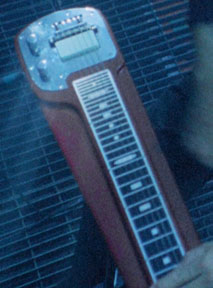
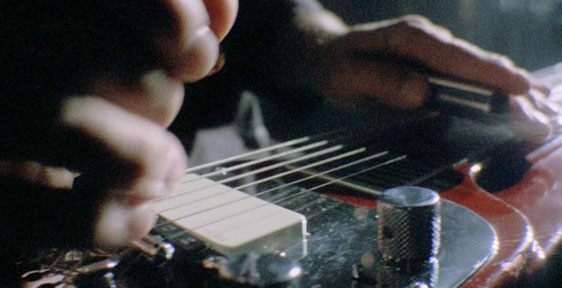
Gilmour playing One of These Days on his red Jedson lap steel tuned to open Em (EBEGBE)
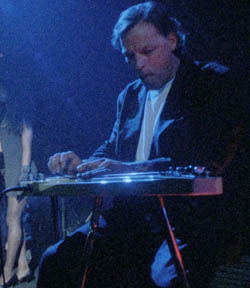
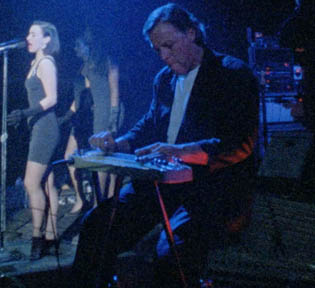
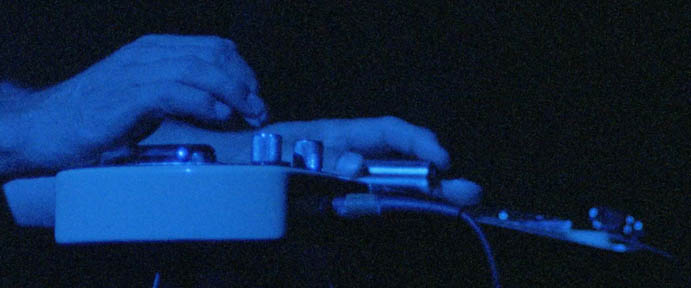
Gilmour playing Great Gig in the Sky on his blonde Fender Deluxe lap steel slide guitar tuned to Open G (DGDGBE)
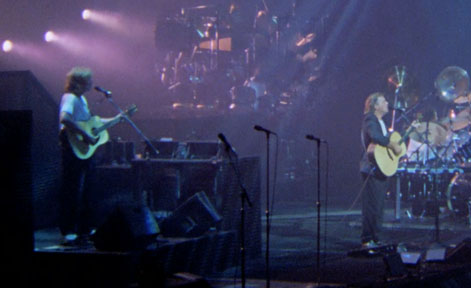
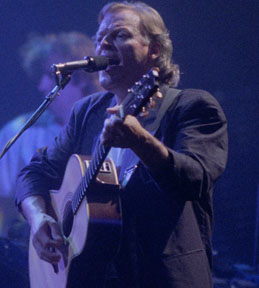
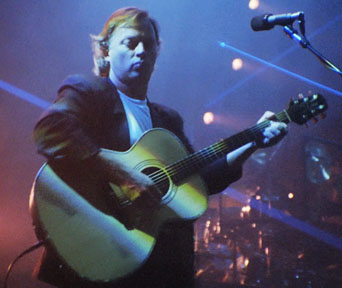
Tim Renwick playing David's Takamine Nakatsugawa EF-400S 12-string guitar (left) and
Gilmour playing a Takamine Nakatsugawa EN-28 6-string guitar on (right)
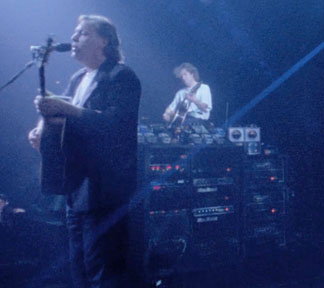
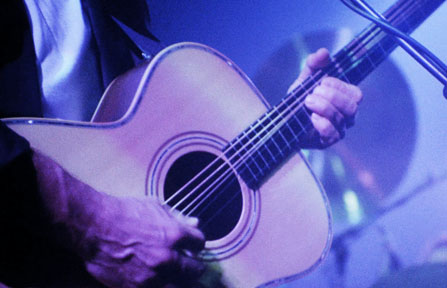
Gilmour playing his Takamine Nakatsugawa EN-28 6-string guitar on Wish You Were Here
1988 EFFECTS AND RIG CHANGES - In the tour break between March and April 1988 Bob Bradshaw of Custom Audio Electronics was asked to make some modifications to the rack and signal chain for David's rig. In early 1988 David described to Guitar Magazine his rig and talked about some possible changes.
"On my last solo tour and on this Pink Floyd tour I'm mostly using Fender Twin Reverb IIs...I'm toying with trying out my Hiwatts again... I use four 4x12s, two Marshall cabs and two Hiwatt cabs. At the beginning of this tour (1987) I had tons of more modern gizmos in it, but I get supicious of the simplicity of the line. I like there to be a simple line where I can duck something into the guitar going into the amplifier...I did have a bunch of stuff with extra splitters and remixers together but I felt suspicious about it all the time."
Phil Taylor, Gilmour's backline tech, talked about changing the rig in an interview for Guitar World magazine given around this time.
"We're probably going to change a couple of things," Taylor projects. "The 19-inch (rack) effects might be getting lost. We are using a Boogie top as a valve overdrive - a very expensive foot pedal! And we have a custom-made fuzz box made by (English effects systems builder Pete Cornish) like a Big Muff. Most of the time David is unhappy with his sound, even when everyone thinks it's wonderful." — Phil Taylor from Guitar World Magazine, July 1988
The custom-made fuzz box was a Pete Cornish P-Fuzz. The P-Fuzz, or Precision Fuzz (later renamed as the P-2), was essentially a modified Big Muff Pi circuit with a brighter mid range than a typical Electro-Harmonix Big Muff. The tone section was modified to be a treble-cut tone control. It was housed in a gray hammerite enclosure. A different version of the P-Fuzz in a black enclosure was used in the 1990 and 1994 rigs. None of these versions included the built in buffer that would be integral to the version offered for sale to the public by Pete Cornish in the late 2000's called the P-2.
A 1990s era Pete Cornish P-Fuzz, or Precision Fuzz (later re-named the P-2).
It was a custom made Big Muff with a brighter mid range than most of the Electro-Harmonix originals.
Other new additions to the board during the tour break were a Boss CE-2 chorus pedal, a second Boss CS-2 compressor, and three additional Boss GE-7 equalizers. Other pedals still present were the Boss HM-2, TC BLD, EHX Big Muff, and the original three Boss GE-7 equalizers, assigned to each pedal. A second Mesa/Boogie amp head was added to the rack. It appeared to be an older, silver knob Mark I rack version, with no built in EQ. One Boogie was probably set specifically for overdrive and the other running slightly dirty with EQ set for blending with the high gain fuzz boxes. It may have also simply been a spare. Note that those Mesa amp heads did not power speaker cabinets. They were used as rack effects in the signal chain. All the high gain and low gain distortions, including the two Boogies, could be acitvated by foot switches on the midi foot controller, or any combination of effects could be programmed and saved as a patch bank. Each bank had up to four pre-sets, accessable with four bank switches.
THE CONCERT FILM AND LIVE ALBUM - Pink Floyd filmed and recorded five concerts at Nassau Coliseum in New York from August 19th-23rd 1988. They used 20 cameras and recorded over 200 hours of footage. The Delicate Sound of Thunder live album was assembled from those recordings and released in November 1988. Many of the songs are edited together from the best parts of the 5 different performances, and some songs are edited versions of a single performance, usually shortening David's guitar solos. Below are selections of solos from DSOT and a soundboard recording of Pink Floyd's August 20th date. This is a very good soundboard recording that demonstrates the tone of David's guitar basically as it sounded coming out of his speaker cabinets, without additional mixing, concert hall reverb, and processing as you hear on the DSOT album. This is more raw than DSOT, and more like what the rig actually sounded like. Presumably David used the exact same setups for the individual songs on each of those 5 nights so they could be easily edited together for the album and video release. Other than different delay times and modulation effects used for certain songs, the high gain lead tone basically sounds like the same setup on almost every song, but there are subtle differences.
Overdrive Solos from Delicate Sound of Thunder
Overdrive Solos from August 20th, 1988 Pink Floyd concert - raw soundboard recording
High Gain Solos from Delicate Sound of Thunder - PART 1
High Gain Solos from Delicate Sound of Thunder - PART 2
High Gain Solos from August 20th, 1988 Pink Floyd concert - raw soundboard recording
On the Turning Away - comparison of August 20th, 1988 Nassau soundboard recording (first) to Delicate Sound of Thunder album mix (second) from the same night
Comfortably Numb - comparison of August 20th, 1988 Nassau soundboard recording (first) to Delicate Sound of Thunder album mix (second) from August 23rd
Kit’s Secret Guitar, Gear, and Music Page
Guitar stuff, gear stuff, soundclips, videos, Gilmour/Pink Floyd stuff, photos and other goodies.
Copyright Kit Rae.
VISIT MY SWORDS, KNIVES and FANTASY ART WEBSITE www.kitrae.net

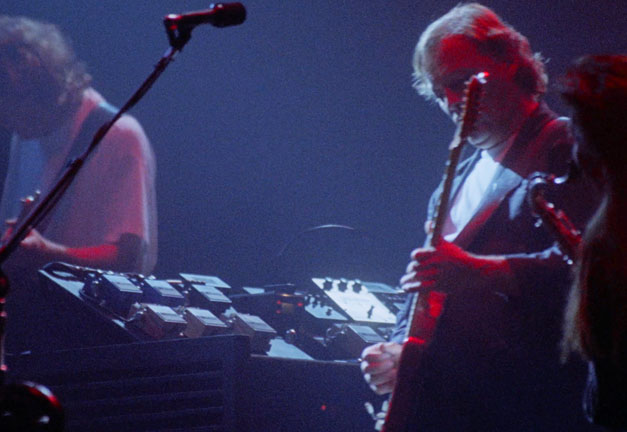
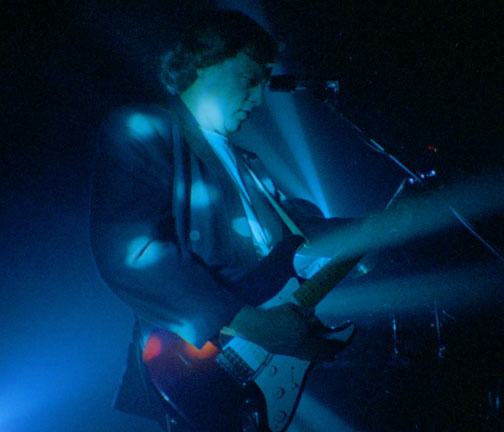
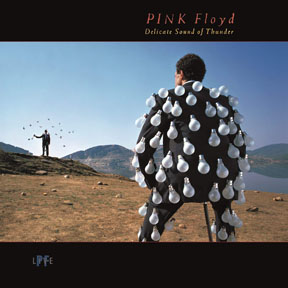
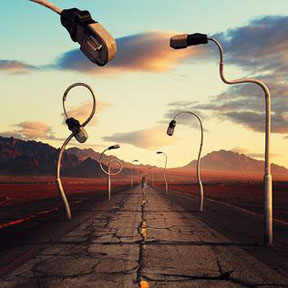
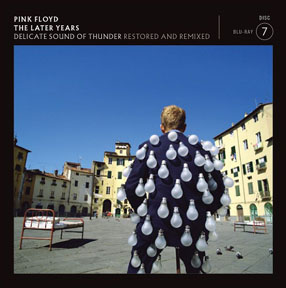
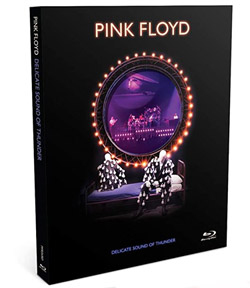
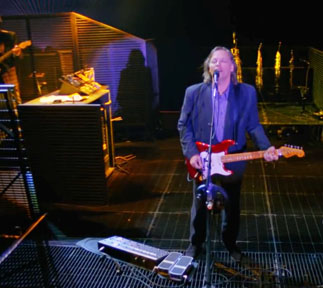
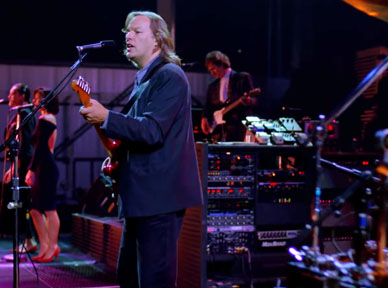
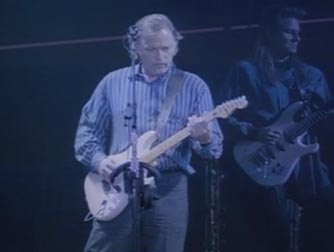
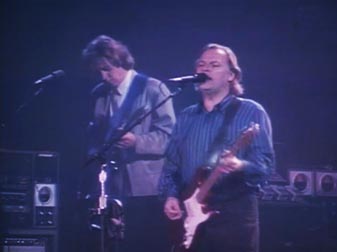
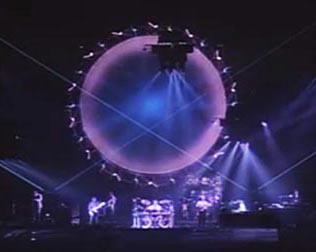

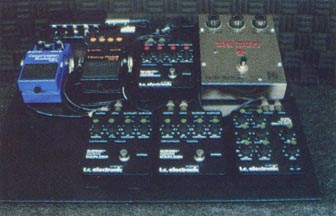
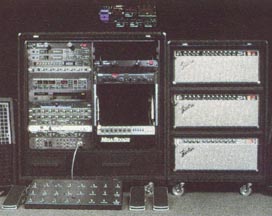
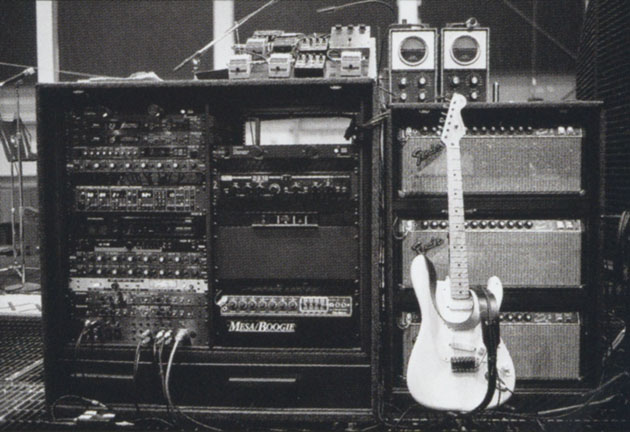
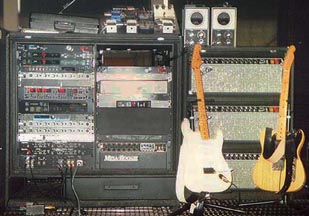
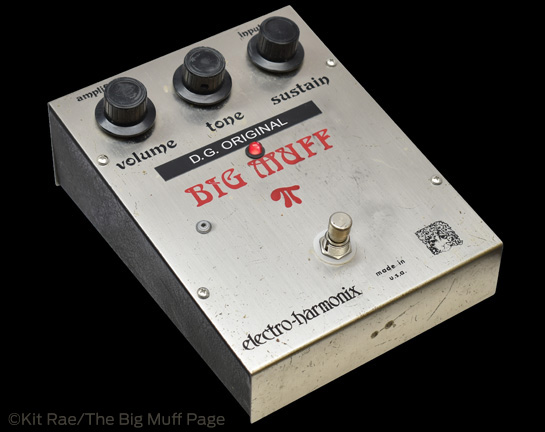
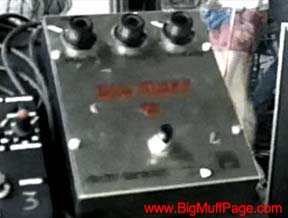
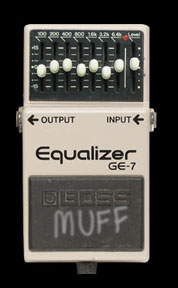
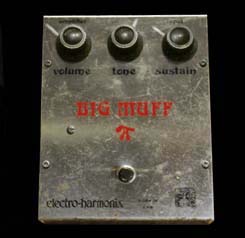
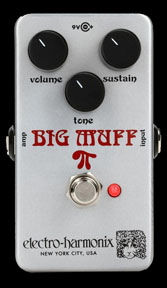
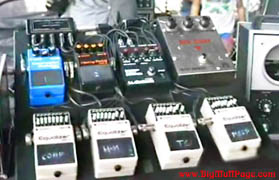
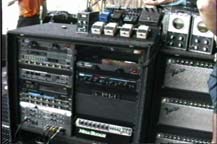
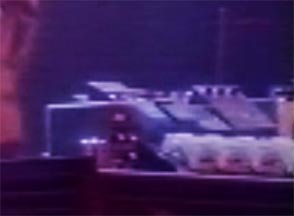
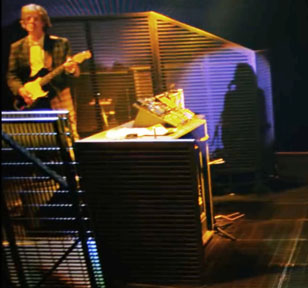
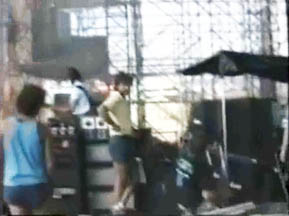
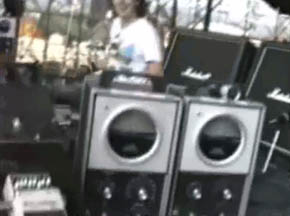
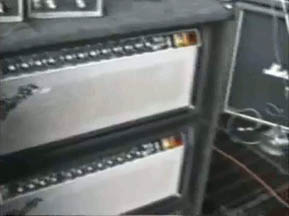
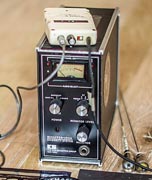
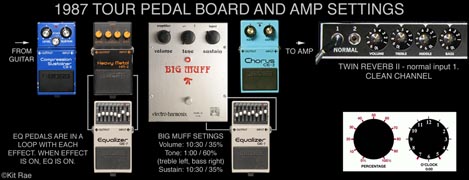


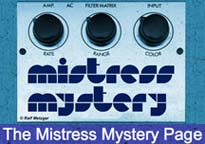


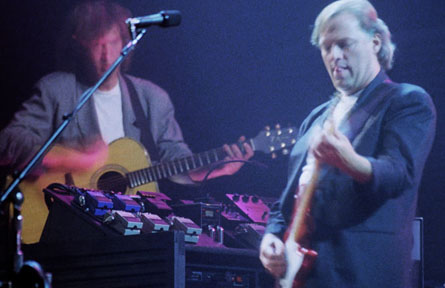
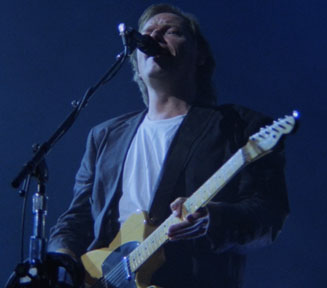
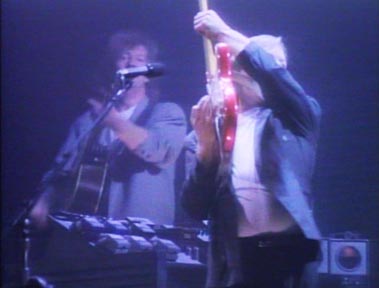
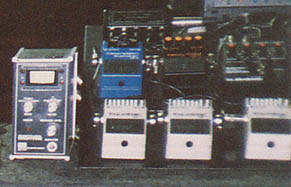
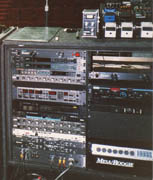
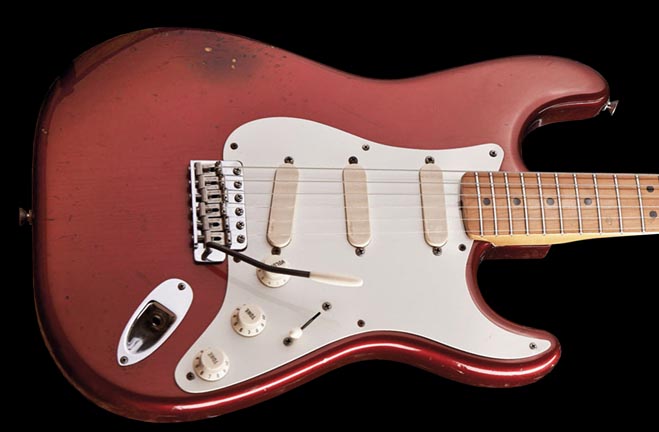
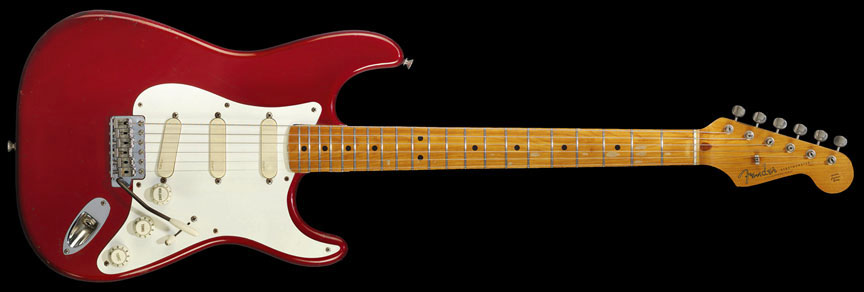
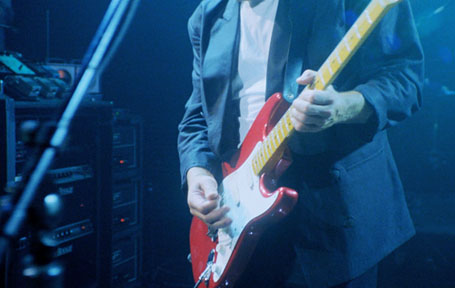
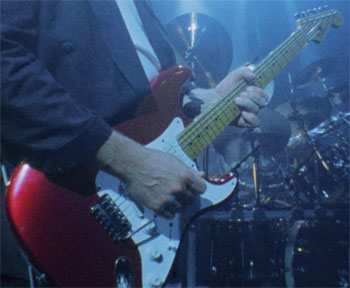
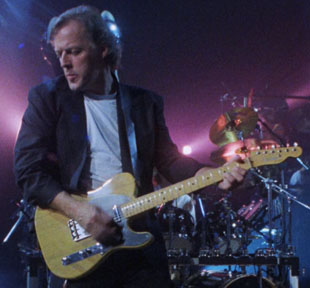
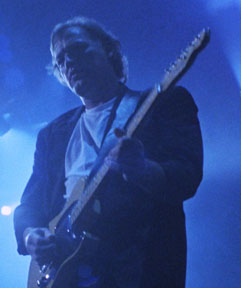
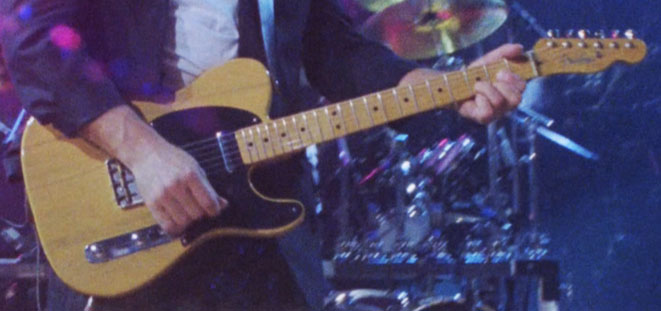

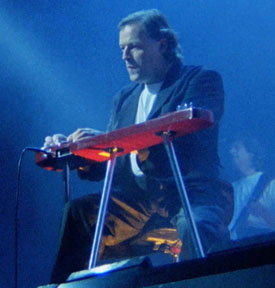
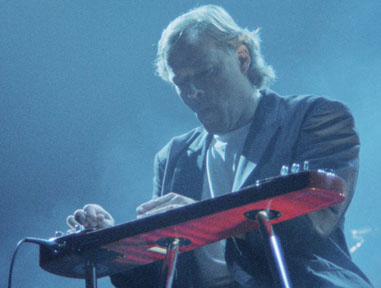
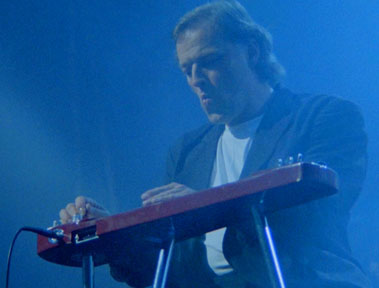
_sm.jpg)
